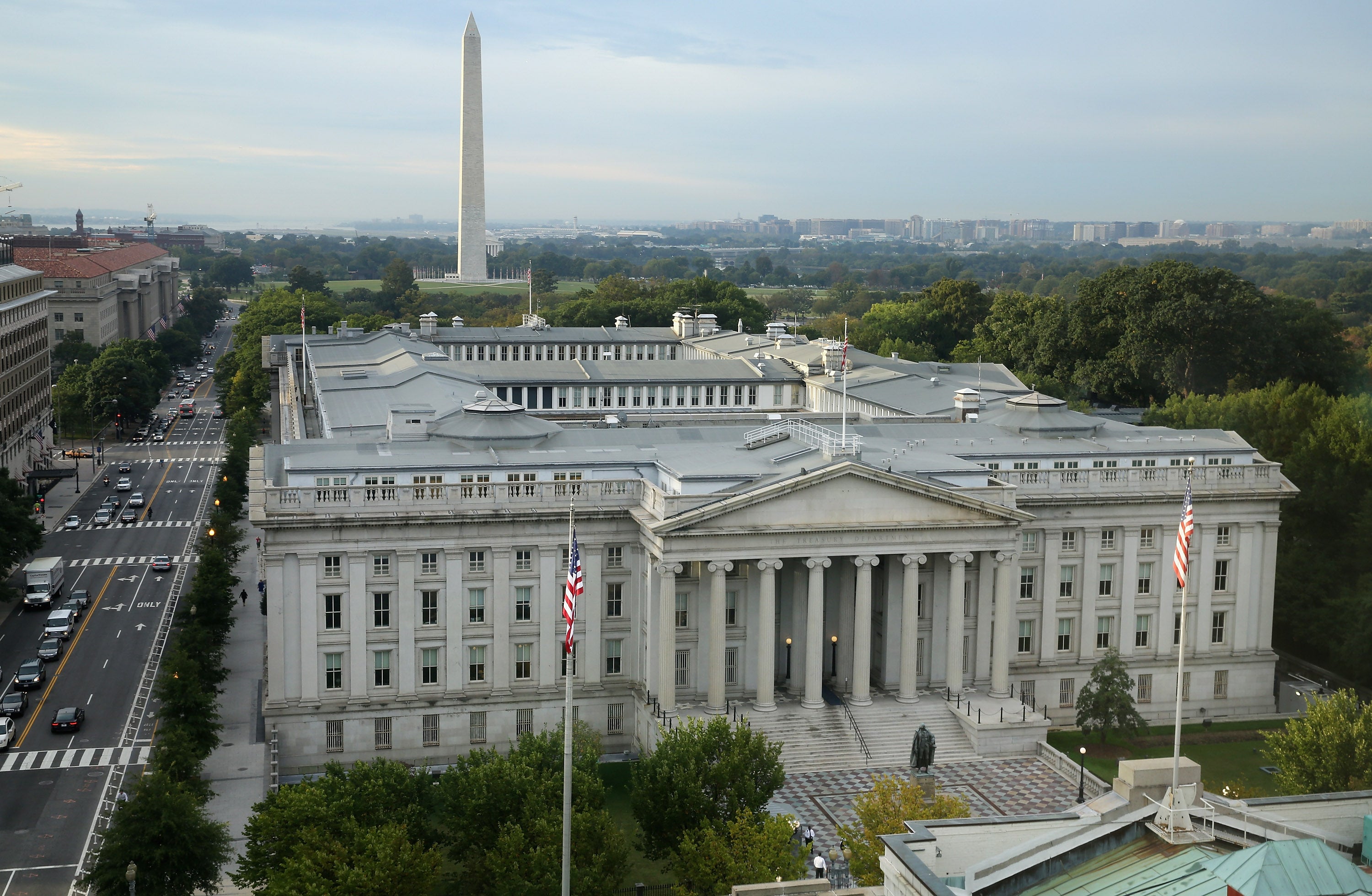US autumn default would cost six million jobs, study says
Report suggests ‘downturn would be comparable to that suffered during the financial crisis’

America could plunge into an immediate recession if Congress fails to raise the debt ceiling and the US defaults on its payment obligations this fall, according to one analysis set to be released on Tuesday.
Mark Zandi, chief economist at Moody’s Analytics, found that a prolonged impasse over the debt ceiling would cost the US economy up to six million jobs, wipe out as much as $15 trillion (£11 trillion) in household wealth, and send the unemployment rate surging to roughly 9 per cent from around 5 per cent.
Lawmakers in both parties agree that the debt ceiling must be raised to avoid economic calamity, but their standoff over how to do so has intensified. Despite increasing the national debt by close to $8 trillion (£5.8 trillion) under former President Donald Trump, Republicans have been adamant that they will refuse to help Democrats increase the debt ceiling in opposition to President Joe Biden’s spending plans. The Department of Treasury has said it will exhaust its “extraordinary measures” to pay the US obligations sometime in October, giving lawmakers little time to act to head off calamity.
“This economic scenario is cataclysmic ... the downturn would be comparable to that suffered during the financial crisis” of 2008, said the report, written by Mr Zandi and Bernard Yaros, assistant director and economist at Moody’s Analytics.
The debt limit is the maximum amount of debt that the Treasury can issue to pay its bills. It was suspended from 2019 through last month under a deal reached under the Trump administration. If Congress fails to increase the debt limit, Treasury would be unable to pay debts as they come due. Treasury Secretary Janet Yellen said earlier this week such a default would be unprecedented in US history. Moody’s “best estimate” is that this date is 20 October, although Treasury has not given a more precise day.
At that point, Treasury officials would face excruciating choices, such as whether to fail to pay $20 billion (£14.7 billion) owed to seniors on Social Security, or to fail to pay bondholders of US debt - a decision that could undermine faith in US credit and permanently drive federal borrowing costs higher.
Failure to raise the debt limit would have catastrophic impacts on global financial markets. Interest rates would spike as investors demand a higher rate of return for the risk of taking on US debt given uncertainty about repayment. An increase in interest rates would ripple through the economy, raising costs not only for taxpayers but for consumers and other borrowers as well. The value of the US dollar would also decline in the long term as investors questioned the security of purchasing US treasuries. The cost of auto and home loans would rise.
“Stock prices would be cut almost in one-third at the worst of the sell-off, wiping out $15 trillion (£11 trillion) in household wealth,” the Moody’s report finds. The market would rebound once the impasse is resolved, but some amount of the losses would be permanent. “Treasury yields, mortgage rates, and other consumer and corporate borrowing rates spike, at least until the debt limit is resolved and Treasury payments resume.”
Both parties remain confident a debt ceiling breach will be avoided. Both White House officials and GOP lawmakers have insisted in recent days that the debt ceiling will be raised or suspended. But they are sharply divided over how that will occur.
Republicans have insisted that Democrats should increase the debt limit on their own, because they are pushing trillions of dollars in new spending priorities. But Democrats have rejected that approach, because current national debt levels, which require raising the debt ceiling, are due to an array policy priorities from both parties. The debt ceiling would have to be raised or suspended regardless of the spending package being pursued by the Biden administration.
The path forward is unclear. Congressional Democrats on Monday unveiled a plan to package the debt ceiling suspension with funding the federal government - which is set to shutdown at the end of this month – along with emergency funding for disaster relief and Afghanistan resettlement funds. Republicans are expected to block the measure, with even moderate GOP Senators saying they will vote against that package as long as it includes raising the debt ceiling. Democrats will then face a choice about their next steps.
Even resolving the matter before the debt ceiling is breached could hurt US taxpayers and the American economy in the long-term. The budget battles over the debt ceiling of 2011 and 2013 under the Obama administration created financial uncertainty and deflated business investment, costing the US economy as much as $180 billion (£132 billion) and 1.2 million jobs by 2015, according to Mr Zandi and Mr Yaros.
Historically, both parties have come together to ensure the debt ceiling gets raised. Turning it into a political pawn would jeopardise international faith in the US government, driving the cost of borrowing higher even if it is not breached.
“Brinkmanship around this whole process will be reflected in higher cost to taxpayers,” Mr Zandi said in an interview. “There is a cost to doing this in a way that is not at least somewhat bipartisan.”
The Washington Post
Subscribe to Independent Premium to bookmark this article
Want to bookmark your favourite articles and stories to read or reference later? Start your Independent Premium subscription today.

Join our commenting forum
Join thought-provoking conversations, follow other Independent readers and see their replies